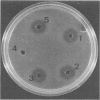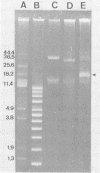Abstract
A total of 221 strains of Lactobacillus isolated from meat and meat products were screened for antagonistic activities under conditions that eliminated the effects of organic acids and hydrogen peroxide. Nineteen strains of Lactobacillus sake, three strains of Lactobacillus plantarum, and one strain of Lactobacillus curvatus were shown to inhibit the growth of some other lactobacilli in an agar spot test; and cell-free supernatants from 6 of the 19 strains of L. sake exhibited inhibitory activity against indicator organisms. Comparison of the antimicrobial spectra of the supernatants suggested that the inhibitory compounds were not identical. One of the six strains, L. sake Lb 706, was chosen for further study. The compound excreted by L. sake Lb 706 was active against various lactic acid bacteria and Listeria monocytogenes. Its proteinaceous nature, narrow inhibitory spectrum, and bactericidal mode of action indicated that this substance is a bacteriocin, which we designated sakacin A. Curing experiments with two bacteriocin-producing strains of L. sake resulted in mutants that lacked both bacteriocin activity and immunity to the bacteriocin. Plasmid profile analysis of L. sake Lb 706 and two bacteriocin-negative variants of this strain indicated that a plasmid of about 18 megadaltons may be involved in the formation of bacteriocin and immunity to this antibacterial compound. In mixed culture, the bacteriocin-sensitive organisms were killed after the bacteriocin-producing strain reached maximal cell density, whereas there was no decrease in cell number in the presence of the bacteriocin-negative variant.
Full text
PDF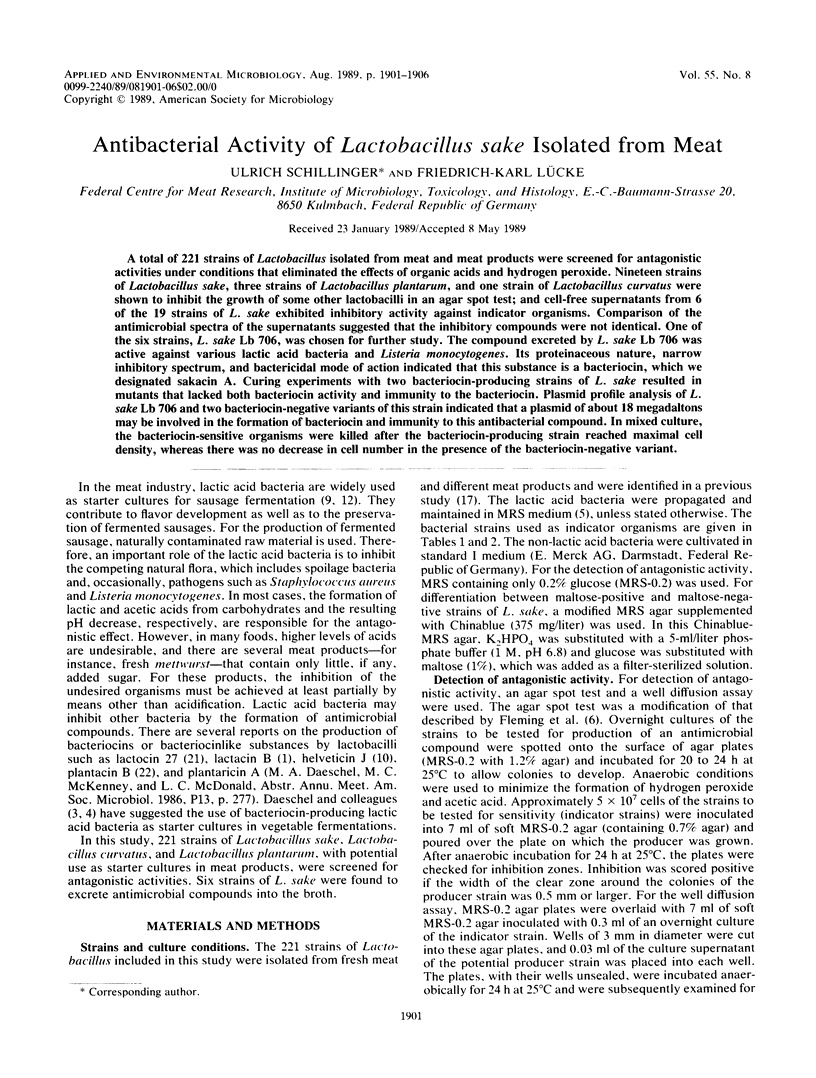
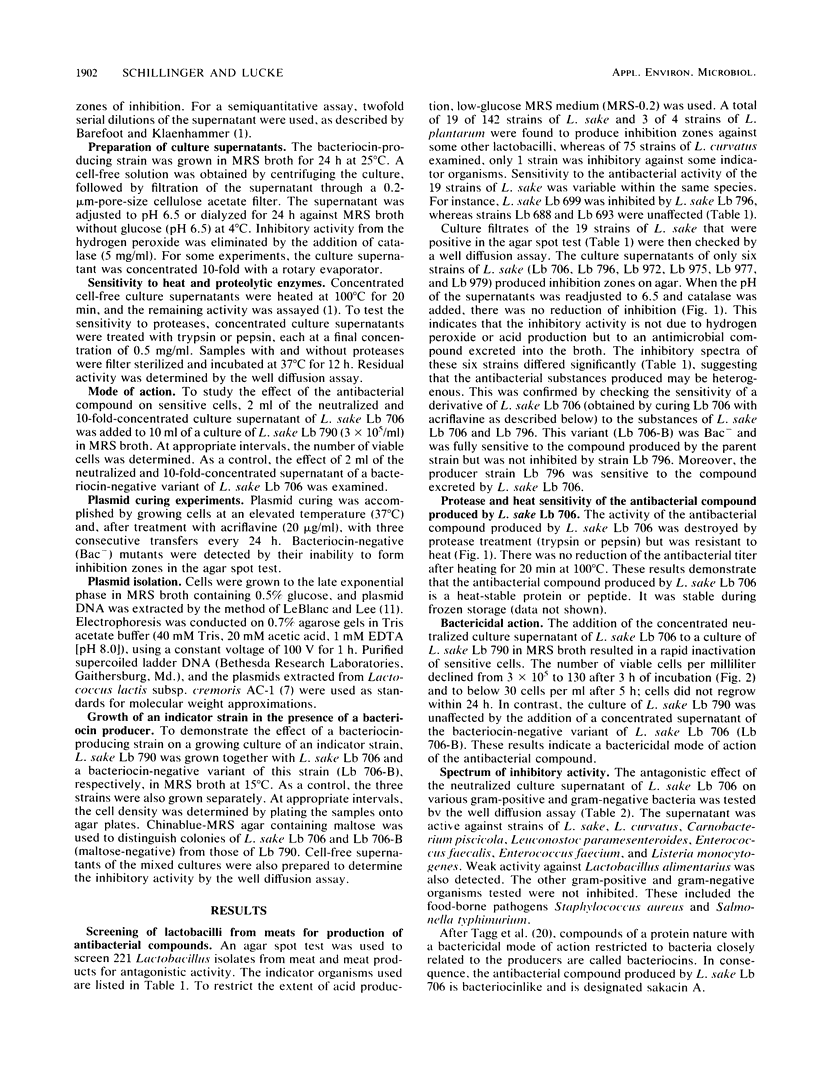
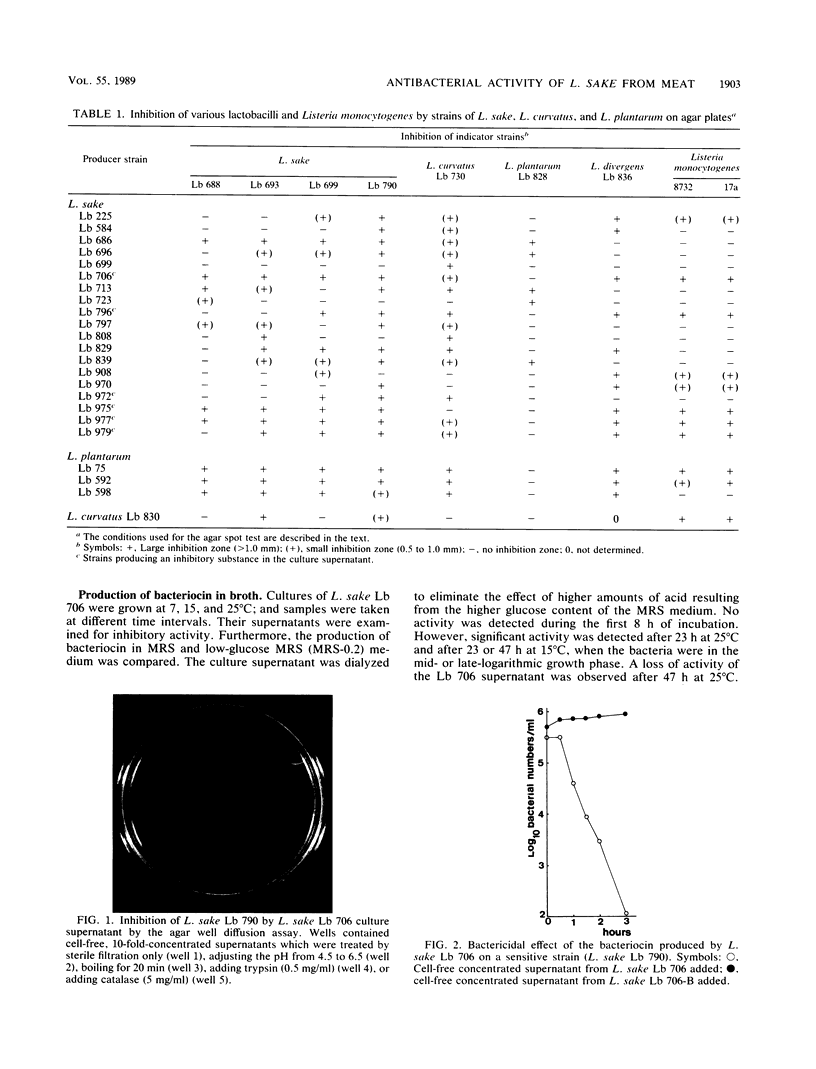
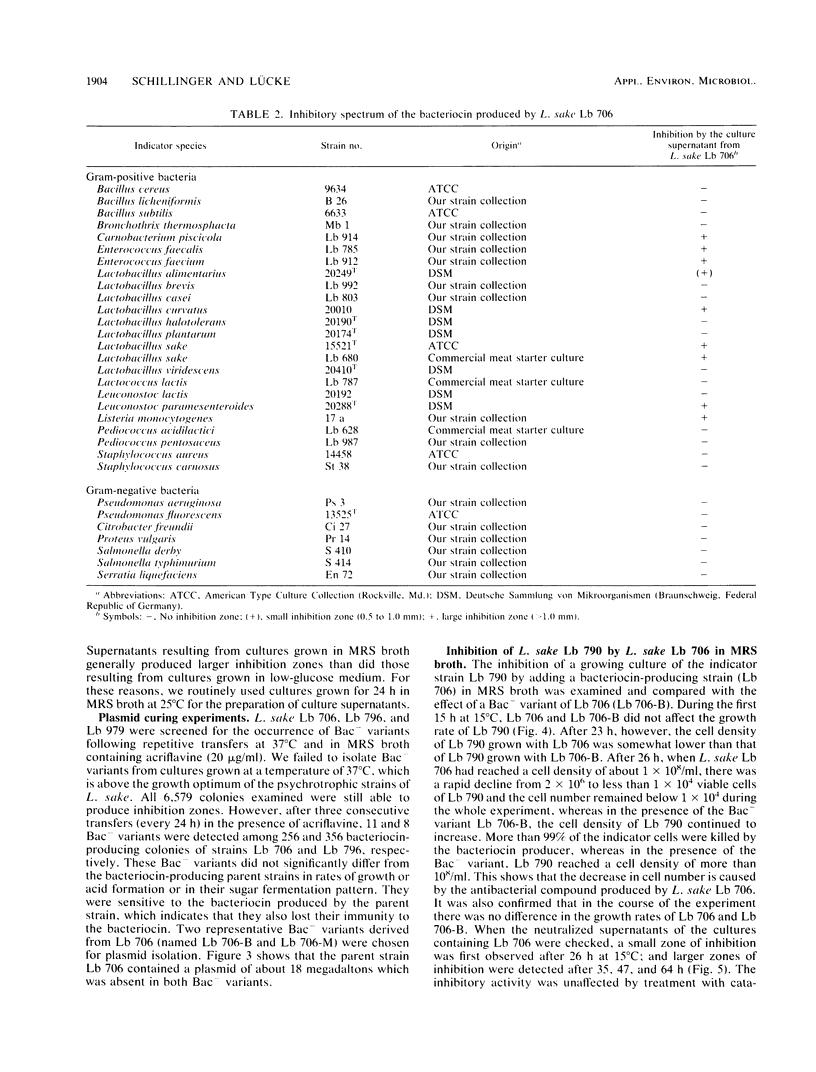
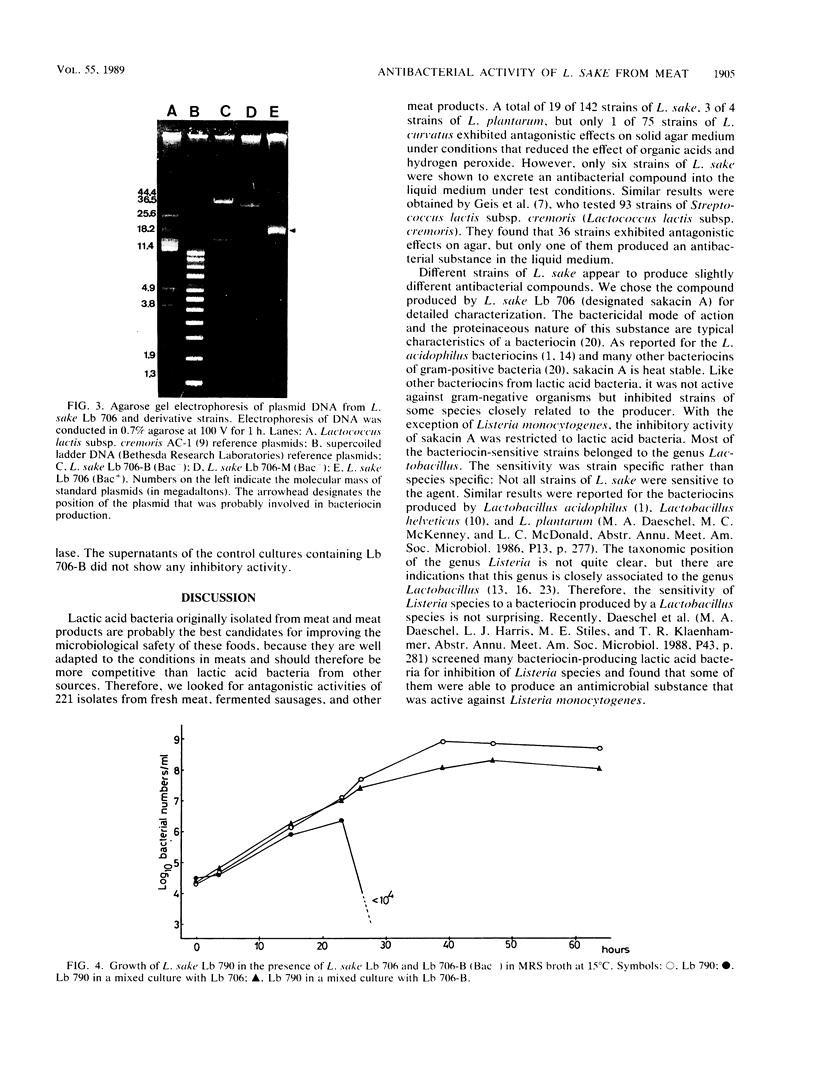
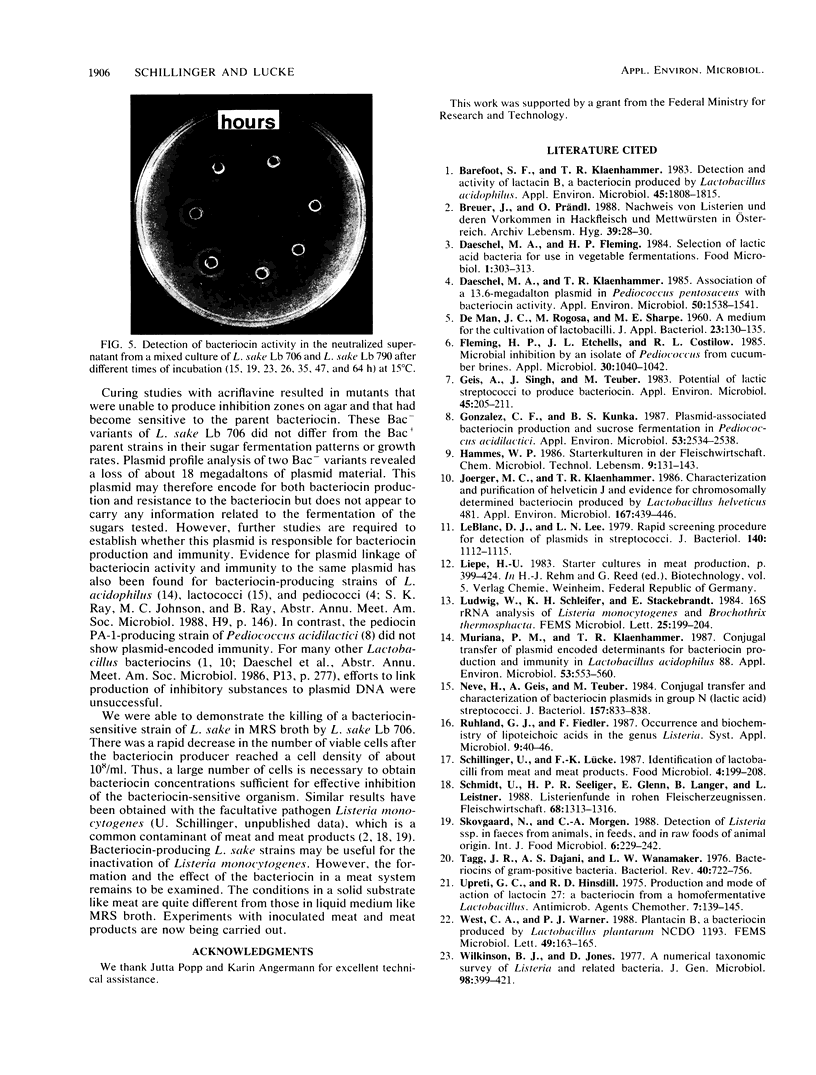
Images in this article
Selected References
These references are in PubMed. This may not be the complete list of references from this article.
- Barefoot S. F., Klaenhammer T. R. Detection and activity of lactacin B, a bacteriocin produced by Lactobacillus acidophilus. Appl Environ Microbiol. 1983 Jun;45(6):1808–1815. doi: 10.1128/aem.45.6.1808-1815.1983. [DOI] [PMC free article] [PubMed] [Google Scholar]
- Daeschel M. A., Klaenhammer T. R. Association of a 13.6-Megadalton Plasmid in Pediococcus pentosaceus with Bacteriocin Activity. Appl Environ Microbiol. 1985 Dec;50(6):1538–1541. doi: 10.1128/aem.50.6.1538-1541.1985. [DOI] [PMC free article] [PubMed] [Google Scholar]
- Fleming H. P., Etchells J. L., Costilow R. N. Microbial inhibition by an isolate of pediococcus from cucumber brines. Appl Microbiol. 1975 Dec;30(6):1040–1042. doi: 10.1128/am.30.6.1040-1042.1975. [DOI] [PMC free article] [PubMed] [Google Scholar]
- Geis A., Singh J., Teuber M. Potential of lactic streptococci to produce bacteriocin. Appl Environ Microbiol. 1983 Jan;45(1):205–211. doi: 10.1128/aem.45.1.205-211.1983. [DOI] [PMC free article] [PubMed] [Google Scholar]
- Gonzalez C. F., Kunka B. S. Plasmid-Associated Bacteriocin Production and Sucrose Fermentation in Pediococcus acidilactici. Appl Environ Microbiol. 1987 Oct;53(10):2534–2538. doi: 10.1128/aem.53.10.2534-2538.1987. [DOI] [PMC free article] [PubMed] [Google Scholar]
- Joerger M. C., Klaenhammer T. R. Characterization and purification of helveticin J and evidence for a chromosomally determined bacteriocin produced by Lactobacillus helveticus 481. J Bacteriol. 1986 Aug;167(2):439–446. doi: 10.1128/jb.167.2.439-446.1986. [DOI] [PMC free article] [PubMed] [Google Scholar]
- Leblanc D. J., Lee L. N. Rapid screening procedure for detection of plasmids in streptococci. J Bacteriol. 1979 Dec;140(3):1112–1115. doi: 10.1128/jb.140.3.1112-1115.1979. [DOI] [PMC free article] [PubMed] [Google Scholar]
- Muriana P. M., Klaenhammer T. R. Conjugal Transfer of Plasmid-Encoded Determinants for Bacteriocin Production and Immunity in Lactobacillus acidophilus 88. Appl Environ Microbiol. 1987 Mar;53(3):553–560. doi: 10.1128/aem.53.3.553-560.1987. [DOI] [PMC free article] [PubMed] [Google Scholar]
- Neve H., Geis A., Teuber M. Conjugal transfer and characterization of bacteriocin plasmids in group N (lactic acid) streptococci. J Bacteriol. 1984 Mar;157(3):833–838. doi: 10.1128/jb.157.3.833-838.1984. [DOI] [PMC free article] [PubMed] [Google Scholar]
- Skovgaard N., Morgen C. A. Detection of Listeria spp. in faeces from animals, in feeds, and in raw foods of animal origin. Int J Food Microbiol. 1988 May;6(3):229–242. doi: 10.1016/0168-1605(88)90015-3. [DOI] [PubMed] [Google Scholar]
- Tagg J. R., Dajani A. S., Wannamaker L. W. Bacteriocins of gram-positive bacteria. Bacteriol Rev. 1976 Sep;40(3):722–756. doi: 10.1128/br.40.3.722-756.1976. [DOI] [PMC free article] [PubMed] [Google Scholar]
- Upreti G. C., Hinsdill R. D. Production and mode of action of lactocin 27: bacteriocin from a homofermentative Lactobacillus. Antimicrob Agents Chemother. 1975 Feb;7(2):139–145. doi: 10.1128/aac.7.2.139. [DOI] [PMC free article] [PubMed] [Google Scholar]
- Wilkinson B. J., Jones D. A numerical taxonomic survey of Listeria and related bacteria. J Gen Microbiol. 1977 Feb;98(2):399–421. doi: 10.1099/00221287-98-2-399. [DOI] [PubMed] [Google Scholar]



